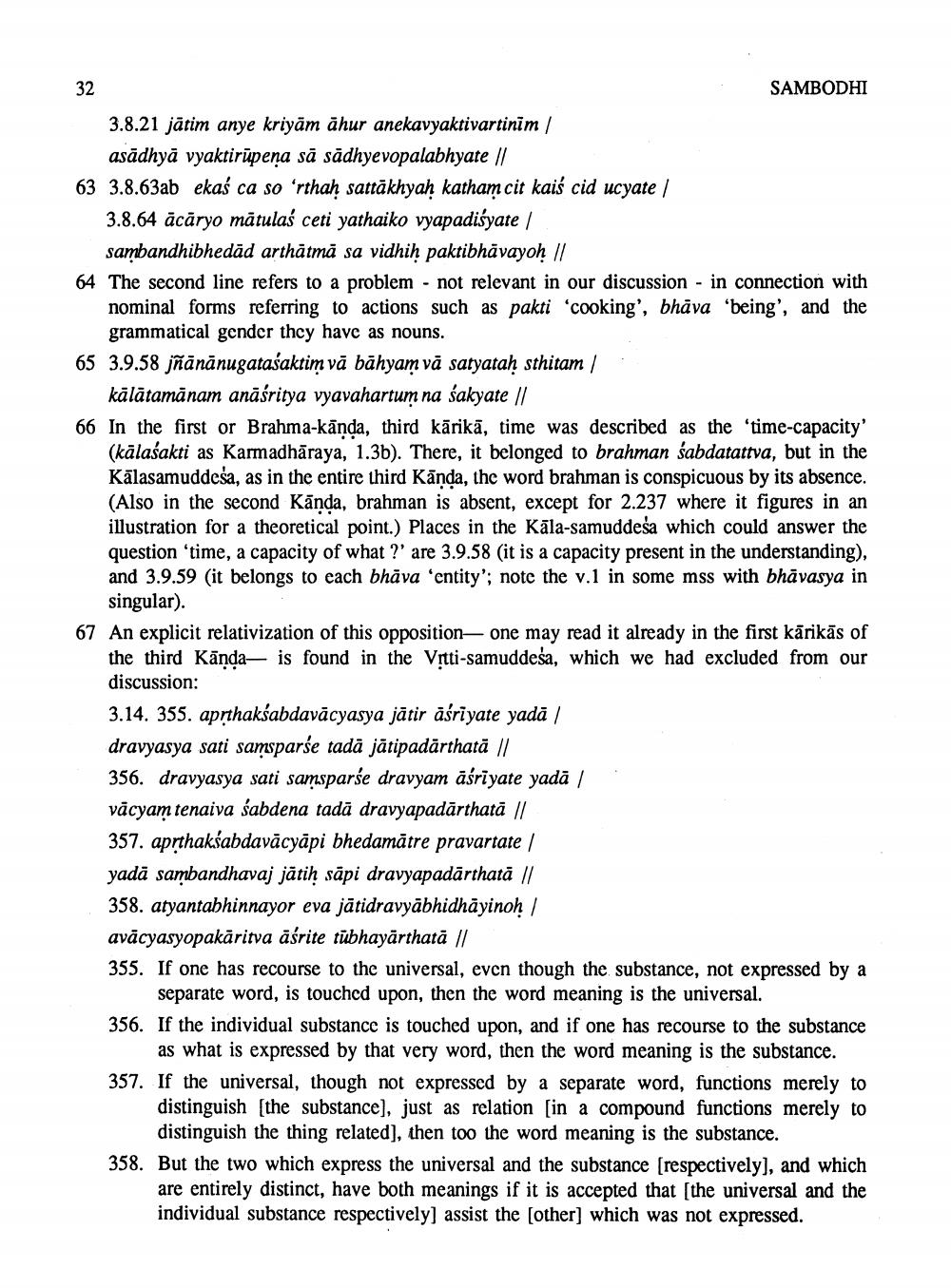________________
SAMBODHI 3.8.21 jätim anye kriyām āhur anekavyaktivartinim /
asādhyā vyaktirūpena sā sādhyevopalabhyate // 63 3.8.63ab ekaś ca so'rthah sattākhyah katham cit kaiś cid ucyate /
3.8.64 ācāryo mātulaś ceti yathaiko vyapadiśyate/
sambandhibhedad arthātmā sa vidhih paktibhāvayoh // 64 The second line refers to a problem - not relevant in our discussion - in connection with
nominal forms referring to actions such as pakti 'cooking', bhāva "being', and the
grammatical gender thcy have as nouns. 65 3.9.58 jñānānugatašaktim vā bāhyam vă satyatah sthitam /
kālātamānam anāśritya vyavahartum na sakyate // 66 In the first or Brahma-kānda, third kārikā, time was described as the time-capacity'
(kālasakti as Karmadhāraya, 1.3b). There, it belonged to brahman sabdatattva, but in the Kālasamuddeša, as in the entire third Kānda, the word brahman is conspicuous by its absence. (Also in the second Kānda, brahman is absent, except for 2.237 where it figures in an illustration for a theoretical point.) Places in the Kāla-samuddesa which could answer the question 'time, a capacity of what ?' are 3.9.58 (it is a capacity present in the understanding), and 3.9.59 (it belongs to each bhāva "entity': note the v.1 in some mss with bhāvasya in
singular). 67 An explicit relativization of this opposition-one may read it already in the first kārikās of
the third Kānda- is found in the Vrtti-samuddesa, which we had excluded from our discussion: 3.14. 355. aprthakśabdavācyasya jātir āśriyate yadā / dravyasya sati samsparse tadā jātipadārthatā // 356. dravyasya sati samsparse dravyam āśriyate yadā / vācyam tenaiva sabdena tadā dravyapadārthatā // 357. aprthaksabdavācyāpi bhedamätre pravartate / yadā sambandhavaj jātiḥ sāpi dravyapadārthatā // 358. atyantabhinnayor eva jātidravyābhidhāyinoh / avācyasyopakäritva áśrite tübhayārthată // 355. If one has recourse to the universal, even though the substance, not expressed by a
separate word, is touched upon, then the word meaning is the universal. 356. If the individual substance is touched upon, and if one has recourse to the substance
as what is expressed by that very word, then the word meaning is the substance. 357. If the universal, though not expressed by a separate word, functions merely to
distinguish (the substance), just as relation in a compound functions merely to
distinguish the thing related], then too the word meaning is the substance. 358. But the two which express the universal and the substance (respectively), and which
are entirely distinct, have both meanings if it is accepted that (the universal and the individual substance respectively) assist the (other) which was not expressed.




